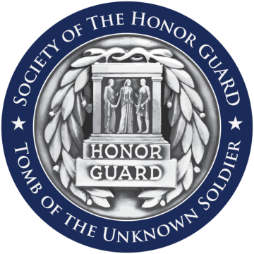Remembering the Battle of Midway
13 years ago

While June 6th is the anniversary of D-Day… let’s not forget the anniversary of the pivotal Battle of Midway, which is widely regarded as the most important naval battle of the Pacific Campaign of World War II. Between June 4–7, 1942, only six months after Japan’s attack on Pearl Harbor, and one month after the Battle of the Coral Sea, the United States (U.S.) Navy under the command of Admiral Chester Nimitz decisively defeated an Imperial Japanese Navy attack against Midway Atoll, inflicting irreparable damage on the Japanese fleet commanded by Admiral Isoroku Yamamoto.
As rapidly as ships, men, and material became available, Nimitz shifted to the offensive. U.S. aircraft sunk the cruiser Mikuma, while the Japanese submarine I–168 torpedoed and sank the disabled Yorktown. Correctly perceiving he had lost and could not bring surface forces into action, Yamamoto aborted the invasion of Midway and withdrew. The defeat at Midway broke the back of the Japanese carrier fleet and resulted in the loss of invaluable air crews. The defeat marked the high tide of Japanese expansion. It also marked the end of major Japanese offensive operations as the initiative passed to the Americans. That August, U.S. Marines landed on Guadalcanal and began the long march to Tokyo.
Battle of Midway - Casualties:
- U.S. Pacific Fleet Losses
- 340 killed
- Aircraft Carrier USS Yorktown
- Destroyer USS Hammann
- 145 aircraft
- Imperial Japanese Navy Losses
- 3,057 killed
- Aircraft Carrier Akagi
- Aircraft Carrier Kaga
- Aircraft Carrier Soryu
- Aircraft Carrier Hiryu
- Heavy Cruiser Mikuma
- 228 aircraft
Battle of Midway Hero Spotlight
U.S. Marine Corps Major General Marion Eugene Carl, was a World War II fighter ace, record setting test pilot, and a notable naval aviator. During World War II he became the first-ever Marine Corps ace. The first of his credited 18 ½ “kills” was a Japanese Zero at the Battle of Midway.

Following the war as a test pilot, Carl was recorded at 650 mph, establishing a new world record [1]. After his retirement after 34 years in the the Marine Corps, he returned to his native Oregon, where he and his wife Edna settled near Roseburg.
His memoir, Pushing the Envelope, coauthored with his friend Barrett Tillman, was published in 1994. He died [2] in 1998 at the age of 82, and was buried with full military honors in Section 4 at Arlington National Cemetery.
by Kevin Welker
-
When U.S. Air Force Captain Chuck Yeager broke the sound barrier in October, he also broke Carl’s record.
-
He was shot to death by an intruder while defending his wife Edna during a home invasion.
Latest News
Missing In Action
Posted October 14, 2025Tomb of the Unknown Soldier Foundation John Hamre, Neale Cosby, Richard Azzaro, and Mick Kicklighter Dear Colleagues, This article is being forwarded to capture the work of Joe Neubeiser, Joe...
America's Appreciation
Posted October 14, 2025America’s Appreciation Benjamin Bell (2001-2004) Veteran’s Day I wear a lanyard at work. It says “US ARMY,” and I’ve adorned it with accouterments. There are two pins commemorating certifications...
The Ship in the Desert
Posted October 14, 2025The Ship in the Desert Larry Seaton, SHGTUS Historian 14th Tomb Guard Reunion We are all familiar with the connection between the USS Olympia and the WWI Unknown Soldier. The Unknown Soldier’s...
Support the Society
The Society of the Honor Guard, Tomb of the Unknown Soldier (SHGTUS) is able to provide our programs, events, assistance, scholarships, and services due to the generosity of its members, organizations, and individuals. SHGTUS does not receive institutional funding. Note: The Society of the Honor Guard, Tomb of the Unknown Soldier is a 501(c)(3) organization, so your contributions may be fully tax deductible.
Learn More
Did you know?
Do you guard in a blizzard or a bad thunderstorm?
YES, but the accomplishment of the mission and welfare of the Soldier are never put at risk. The Tomb Guards have contingencies that are ready to be executed if the weather conditions ever place the Soldiers at risk of injury or death (i.e. lightning, high winds, etc). This ensures that Sentinels can continue the mission while ensuring safety. It is the responsibility of the Chain of Command from the Sergeant of the Guard to the Regimental Commander to ensure mission accomplishment and soldier welfare at all times.
It was erroneously reported that during Hurricane Isabel, the Sentinels were ordered to abandon their posts for shelter and that they refused. No such order was ever given. All proper precautions were taken to ensure the safety of the Sentinels while accomplishing their mission. Risk assessments are constantly conducted by the Chain of Command during changing conditions to ensure that soldier welfare is maintained during mission accomplishment.

